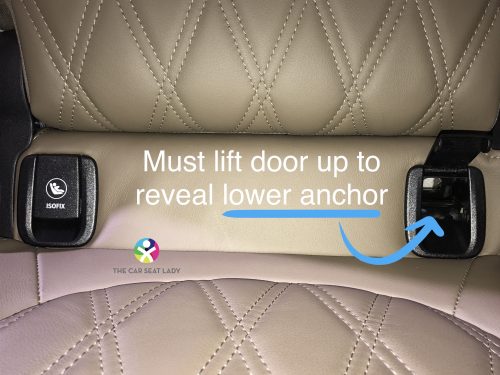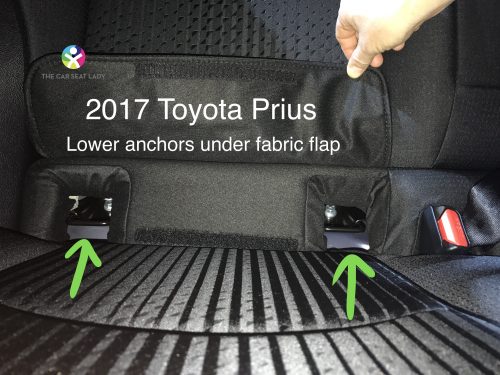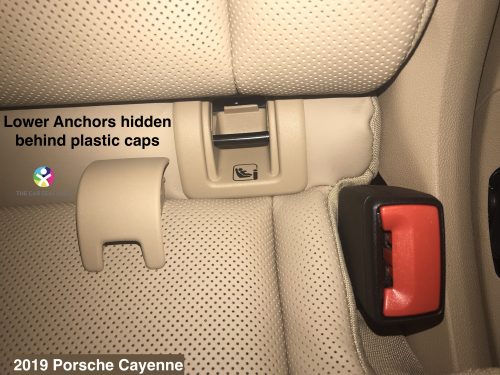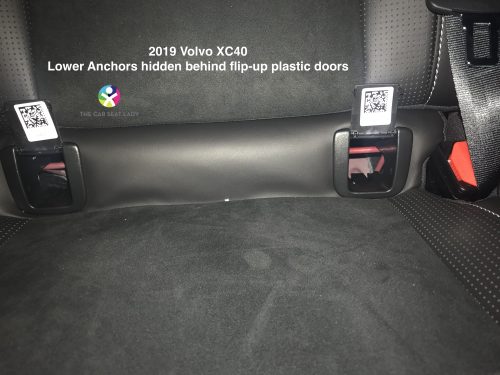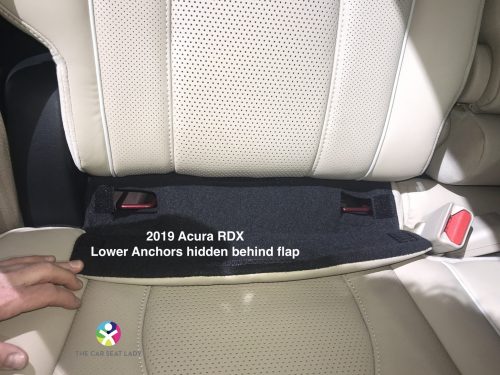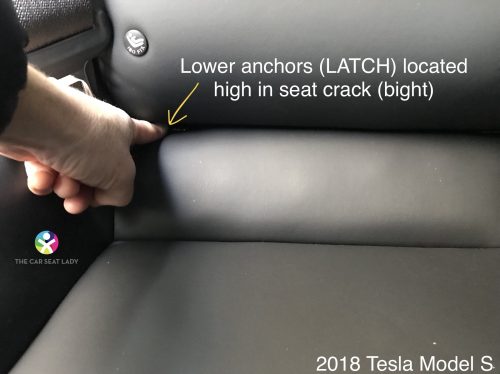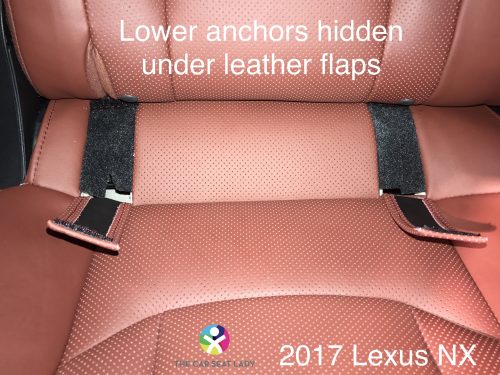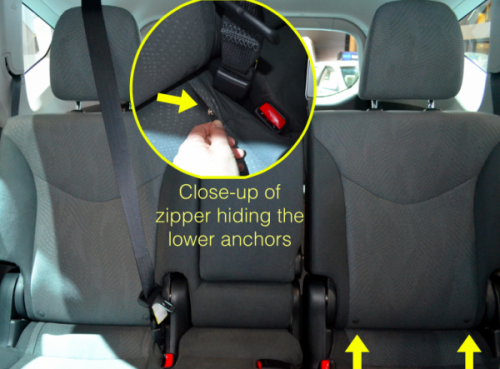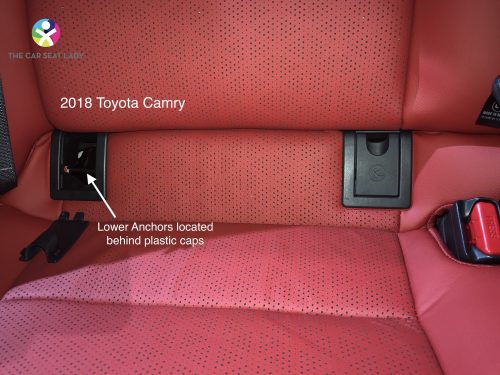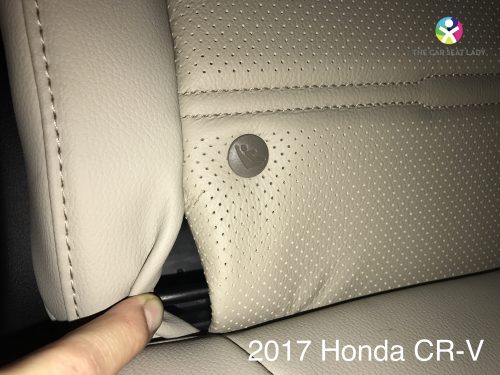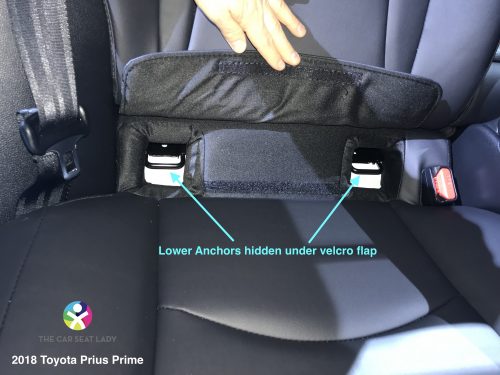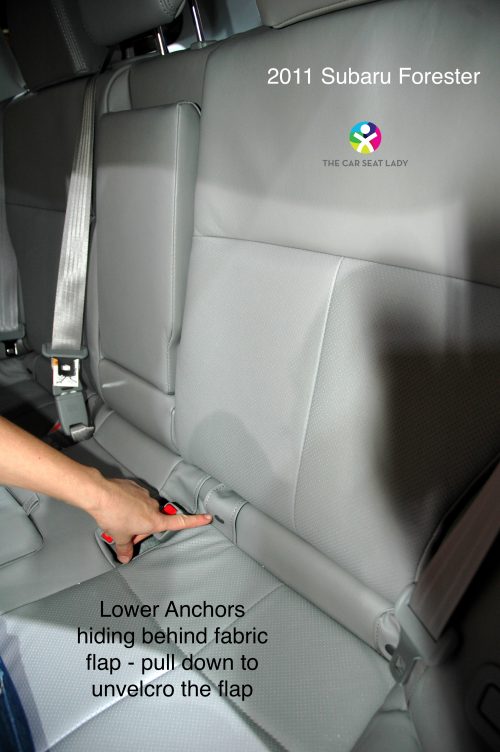All vehicles in the US model year 2003 and newer will have at least 2 sets of lower anchors. These anchors can be difficult to find and/or use properly. Follow these steps to locate your lower anchors, so you are sure you are connecting your car seat to the correct parts of the vehicle.
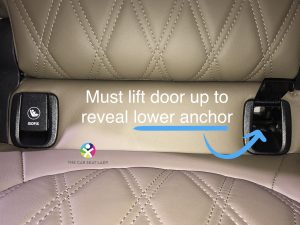
Step 1: Read your vehicle owner’s manual. We cannot stress the importance of doing this enough!! The manual will tell you if you have lower anchors and where to find them. DO NOT ASSUME that you have found the lower anchors–or that you can use the anchors you have found–without reading the manual.
Aren’t the lower anchors obvious in most cars? Nope! It’s definitely not always obvious if the metal part in the seat crack is the actual lower anchor or if it’s another part of the vehicle altogether! Over the years while helping thousands of families, we’ve seen many parents find flimsy pieces of metal (as thin as coat hanger wire) in the seat crack and incorrectly believe these were the lower anchors. Some parents have even secured their child safety seat to these metal pieces, a mistake which would have very serious consequences in a crash.
Step 2: Confirm with the vehicle owner’s manual that you can use the lower anchors in the seating position you have selected. This is one of the most confusing parts of car seat installation for many parents, unfortunately, and a mistake that we see all the time. Not all lower anchors can be used for installation in all seating positions. In most vehicles, you can use the lower anchors to install a car seat ONLY on the side seating positions. For example in this photo, a car seat could be installed using lower anchors on the side seats but NOT in the middle, even though it looks like an installation with lower anchors would work in that middle position.
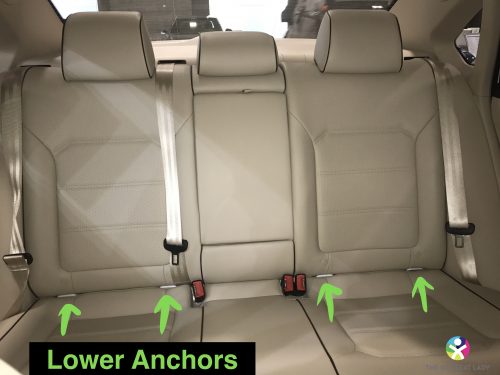
The history behind this confusing prohibition: In the US, vehicles model year 2003 and newer are required by law to have designated lower anchor pairs in at least two rear seating positions. The two lower anchors that make up a pair are spaced 11 inches (280 mm) apart from each other; this is the standard lower anchor spacing. Although vehicle manufacturers are allowed to put lower anchors in more than two rear-seating positions, most have not done so.
In the back seat of most vehicles, the two side seats have lower anchors but the center does NOT have lower anchors. Most vehicle manufacturers DO NOT allow you to “borrow” the lower anchors from each side seat to install a car seat in the center. Many car seat manufacturers also prohibit this. A wider spacing may allow the child safety seat to move too much side-to-side in a crash.
If the vehicle has no back seat or if the back seat is too small to safely fit a child safety seat (for example in pickup trucks or convertibles) AND the vehicle has an airbag on/off switch as ORIGINAL equipment, then one of the front seats must have lower anchors.
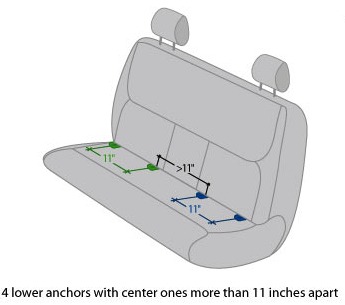
Step 3: Search carefully for the lower anchors, now that you know where to look (because you read your vehicle owner’s manual!!) They’re usually hidden from view and are inside the vehicle seat crack, called the seat bight. The bight is the part where the cushion for your back meets the cushion for your bottom. Some lower anchors are on the vehicle seat back, an inch or two above the bight, or on the seat bottom, and inch or two in front of the bight. If you can’t immediately see the lower anchor, you’ll probably need to put your hand inside the bight and feel around (this may also be a good time to clean your car!)
Lower Anchor Labeling: In an attempt to help folks more easily locate the lower anchors, most vehicle seats mark the location of the lower anchors in some manner. In some vehicle’s you’ll see a small plastic button on the vehicle seat back indicating the presence of the lower anchor.
A lower anchor treasure hunt: Certain vehicle models do a really good job at hiding the lower anchors. You may need to lift up a fabric flap to access them–this is common in Toyota and Lexus models. In other vehicles, like Audis, you need to remove a seat cushion bolster to reveal the lower anchors. Other vehicles have a velcro flap you must open (Subaru) or plastic covers you must remove from the metal bar or vehicle seat cushion. In one older model Prius, you had to actually unzip a zipper to reveal the anchor! Check out these hidden lower anchors on a variety of vehicles:
